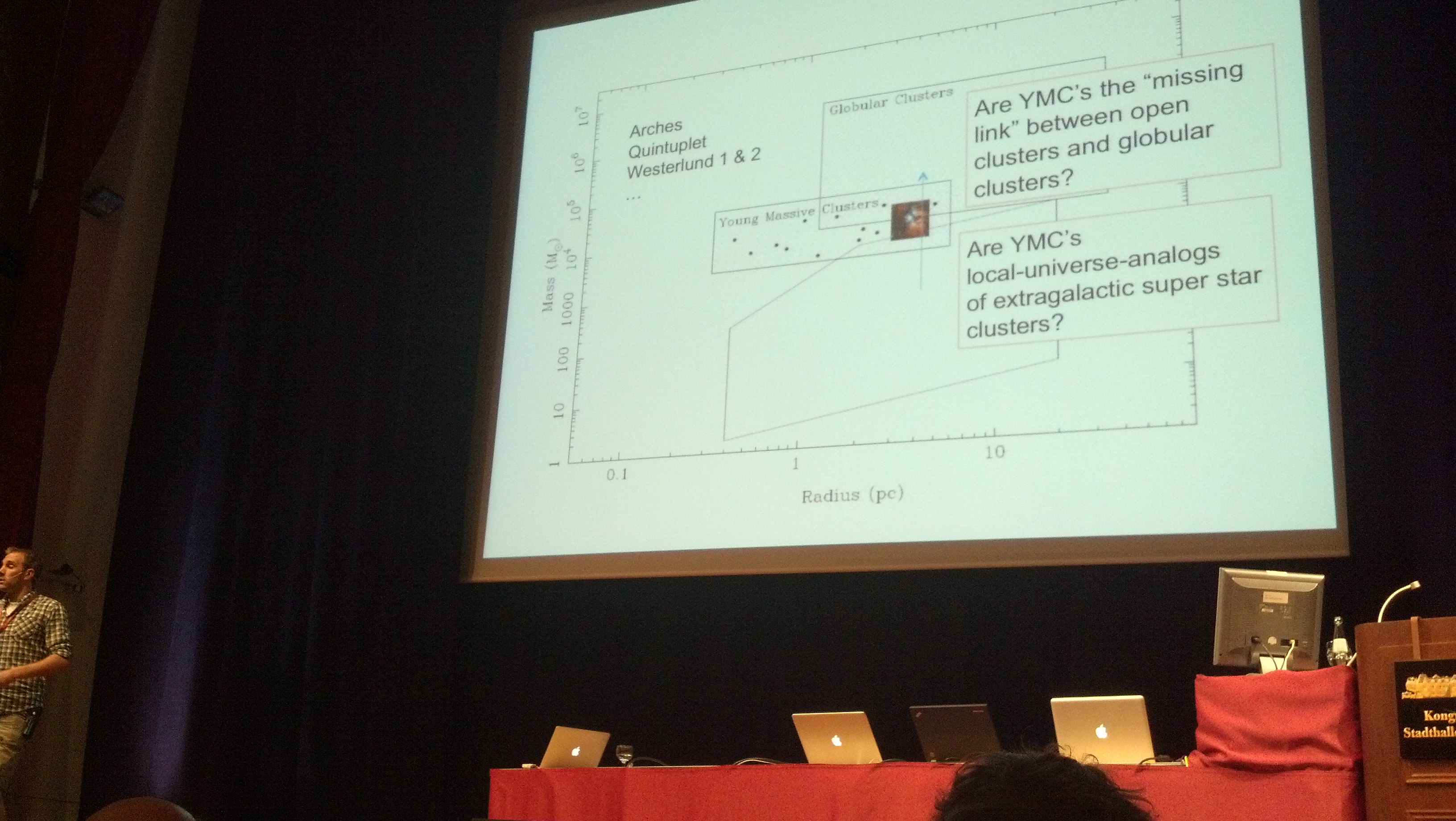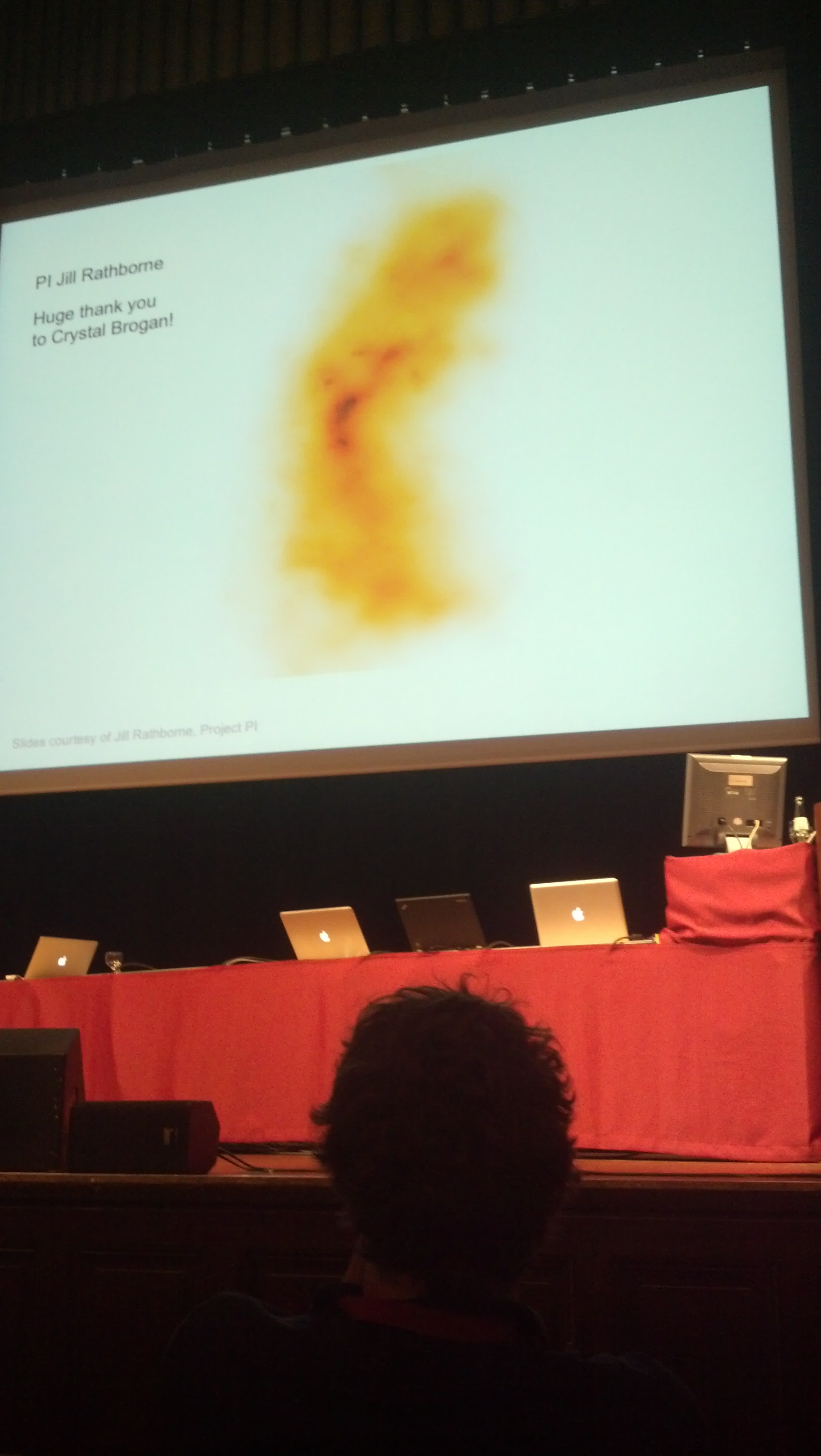THE FORMATION AND EARLY EVOLUTION OF YOUNG MASSIVE CLUSTERS
S. Longmore (Astrophysics Research Institute, Liverpool John Moores University, United Kingdom), J. Alves (University of Vienna), J. Bally (University of Boulder), N. Bastian (Liverpool John Moores University, United Kingdom), E. Bressert (CSIRO Astronomy and Space Science), J. Dale (LMU, Germany), D. Kruijssen (MPA, Germany), J. Rathborne (CSIRO Astronomy and Space Science), L. Testi (ESO, Germany), A. Stolte (University of Bonn, Argelander Institut, Bonn, Germany)
We review the formation and early evolution of the most massive (and dense) young stellar clusters in our Galaxy, and the role this can play in our understanding of star and planet formation as a whole. We start by reviewing the global properties and environmental conditions of the known young massive clusters (YMCs) and their progenitor gas clouds. We then focus on the observed embedded dense core and (proto)stellar populations within these clusters, and discuss how such large stellar systems can potentially simultaneously distinguish between competing cluster formation models and provide the strongest constraints on the physical origin of the stellar initial mass function. After reviewing the current theoretical framework for the formation and evolution of YMCs, we summarise the debate on two key open questions: infant (im)mortality and the evidence for/against significant age spreads within YMCs. We then discuss which fraction of all stars and planets, including our own solar system, may have formed in extreme environmental conditions (proximity to high-mass stars, high (proto)stellar densities etc) similar to those found in these clusters, rather than the more benign conditions found in local, low-mass star formation regions. Finally, we review how the most massive and dense young clusters can be used as a bridge linking what we learn about star and planet formation in the nearest-by regions, to starburst systems in the Local Universe, globular cluster formation and star/planet formation at the earliest epochs of the universe.
Intro
We understand low-mass sf; it is atypical
- local SF is atypical
- 50% of SF in most massive clusters (Lee, Murray, Rahman 2012)
- peak SFR at z=2-3
- most MW stars older than a few Gyr
- How universal is the SF process?
- Does SF care about environment?
- What are YMCs?
- as big as globulars but currently forming
- Carina: Trumpler 14
- association surrounding YMC. Not YMCAs
- Why good laboratory?
- How do lives differ in isolation vs cluster?
Ideal probes because they probe extremal SF
Theory: How do they form?
- many processes: too many to simulate
- gass collapse, but feedback important
- density essential - determines whether bound or not
- need to understand initial conditions: mass as a function of size scale early

Observations
- What do we expect to see?
- mass-radius diagram
- need v_esc > c_II
- How dense? YMC at given mass, radius
- Collapse of single cloud?
- Cloud-cloud collision?
- Scenarios:
- Initial radius same as final stellar radius * "in situ"
- Initial radius >> final radius; shrinks * requires convergence; "conveyor belt" * P-cygni profiles, collision signatures
- Mass, radius when there are no progenitors
- Can do YMC progenitors out to 10's of MPC with ALMA
Status in Jan 2012: G0.253 biggest.
- Inner 200 pc:
- Molinari Ring, reference to John's talk
- Masses from Herschel column maps
- 1pc, 3pc apertures (related to tidal radius)
- Sgr B2, Sgr C star forming, others are not
- First quadrant:
- All massive things are prodigiously star forming
- Fourth quadrant:
- ATLASGAL 4th quadrant - Urquhart 2013. 6 candidates
- MALT 90 Contreras - a couple candidates
- Sarolta Zahorecz 1B040
- How do you form YMCs?
- Where are YMCs? Where are star-forming things?
- Only fair comparison if present-day gas clouds will produce same stellar population as now
- Only works if cluster disruption unimportant
- fair enough samples (10%, 30% area)
- Only very young clusters so they weren't disrupted
- same number of star-forming clouds, same number of clusters
- LOTS of starless in CMZ, NONE in 1st quadrant
- Galactic Center = in situ mode, 1st quad = conveyor belt mode
- W43, W49 invoked as YMC progenitors [yikes ... W49, W51 actually]
- W49 fed by filaments on 60 pc scales
- plenty of regions show similar features
- looking for evidence of "inflow" or "convergence" onto massive clusters * conveyor belt makes sense
- Back to the CMZ:
- Dense gas only on the left
- Mass in boxes same, density is changing
- Sgr A* is not at the center of the ring * Low density in the back * high density in the front * Sgr A* close to the front * Sgr A* compresses the gas? (interacting with 20, 50 km/s clds)
- Predictions:
- strongest shocks just after Sgr A*
- Elongated
- Kruijssen+, Lucas+, Clark+
- comparison with observations....
- Exciting because following IMF as a function of absolute time * know orbit around Center * know downstream is older than upstream
Summary
- Different modes of YMC formation * None starless * "would be exciting if someone found that" [not for me]
- Galactic center is different * most extreme SF environment where we can resolve stars
- Can follow assembly as a function of time
- Can extrapolate Milky Way to other galaxies (Kruijssen & Longmore)
ALMA data
- PI Rathborne
- Crystal Brogan helped a lot
- Banana!
- HNCO movie
- SiO movie

Questions
- Q: Battersby - "in situ" idea. Short lifetime. CMZ should not be forming stars.
- A: SF is slower according to Kruijssen. Once the turbulence dissipates, stars will form anyway.
- Q: Battersby - What does the previous state of the gas look like for in situ?
- A: Thor HI envelopes will tell you about kinematics. We don't know initial conditions for things in the disk.
- Q Hans: Continuum image of brick. High density. No stars formed. Cries out as the initial conditions of SF. Is THIS the initial conditions for SPH codes?
- A: Surprisingly small clumps. Most massive is ~few hundred Msun
- Hans: can form more massive stars later
- Q McKee: What fraction of YMC has already formed in disk?
- A: High Q (lyman continuum luminosity). Don't know
- Q Henrik: Help a little with the interpretation. Do the data help say something about shocks, anything?
- A: A lot of potential answers... simulations of gas cloud at Sgr C, whiz by Sgr A.
- (we will be able to say things...)
- Q: Klessen - in Alma data, do you have OI? [No] Clarke and Glover predict OI prominent and bright. Could distinguish between UV and CR flux.
- A: Different gas temperature. Wish we had OI. Shock or CR heating. SOFIA only thing that can do it